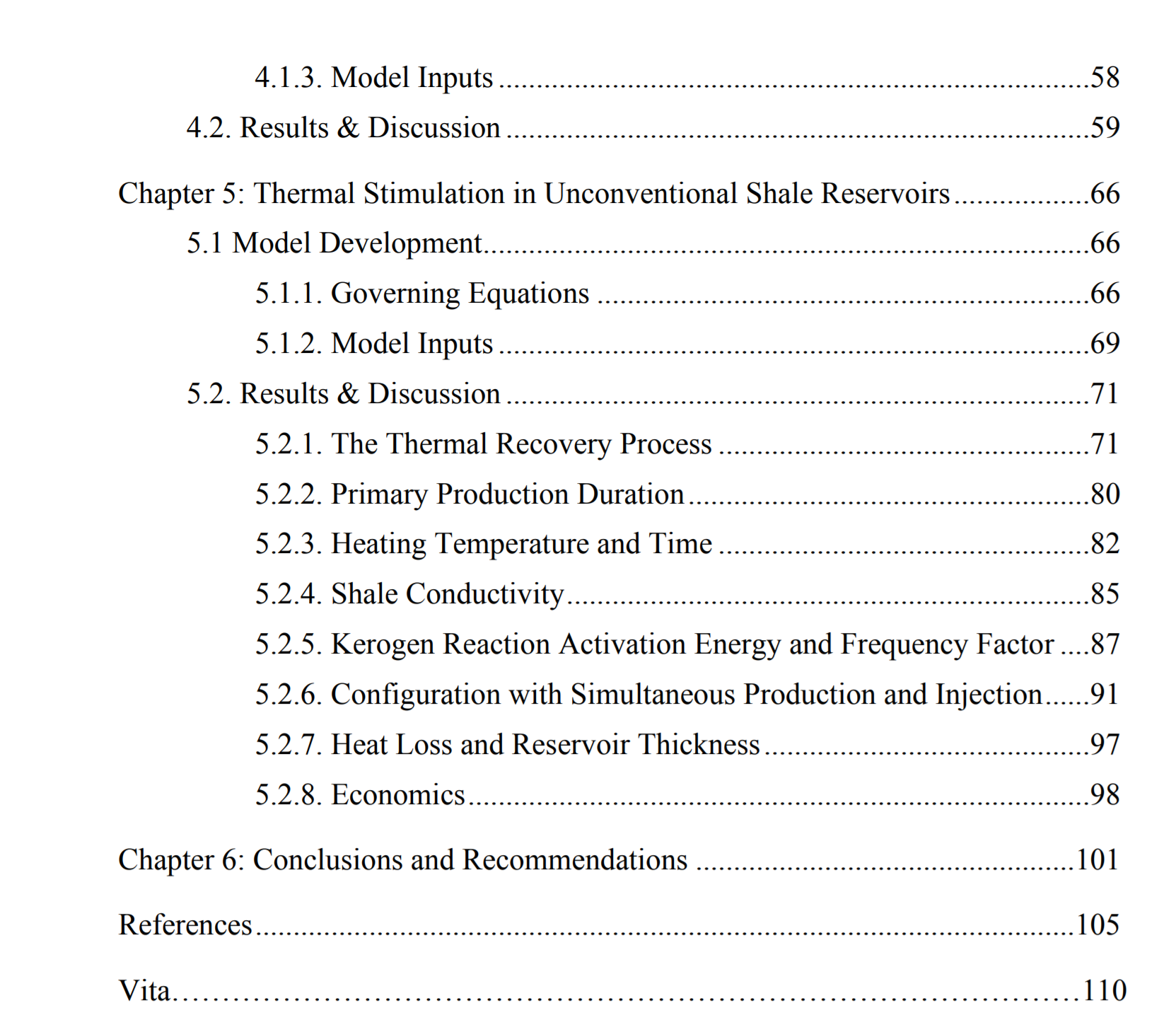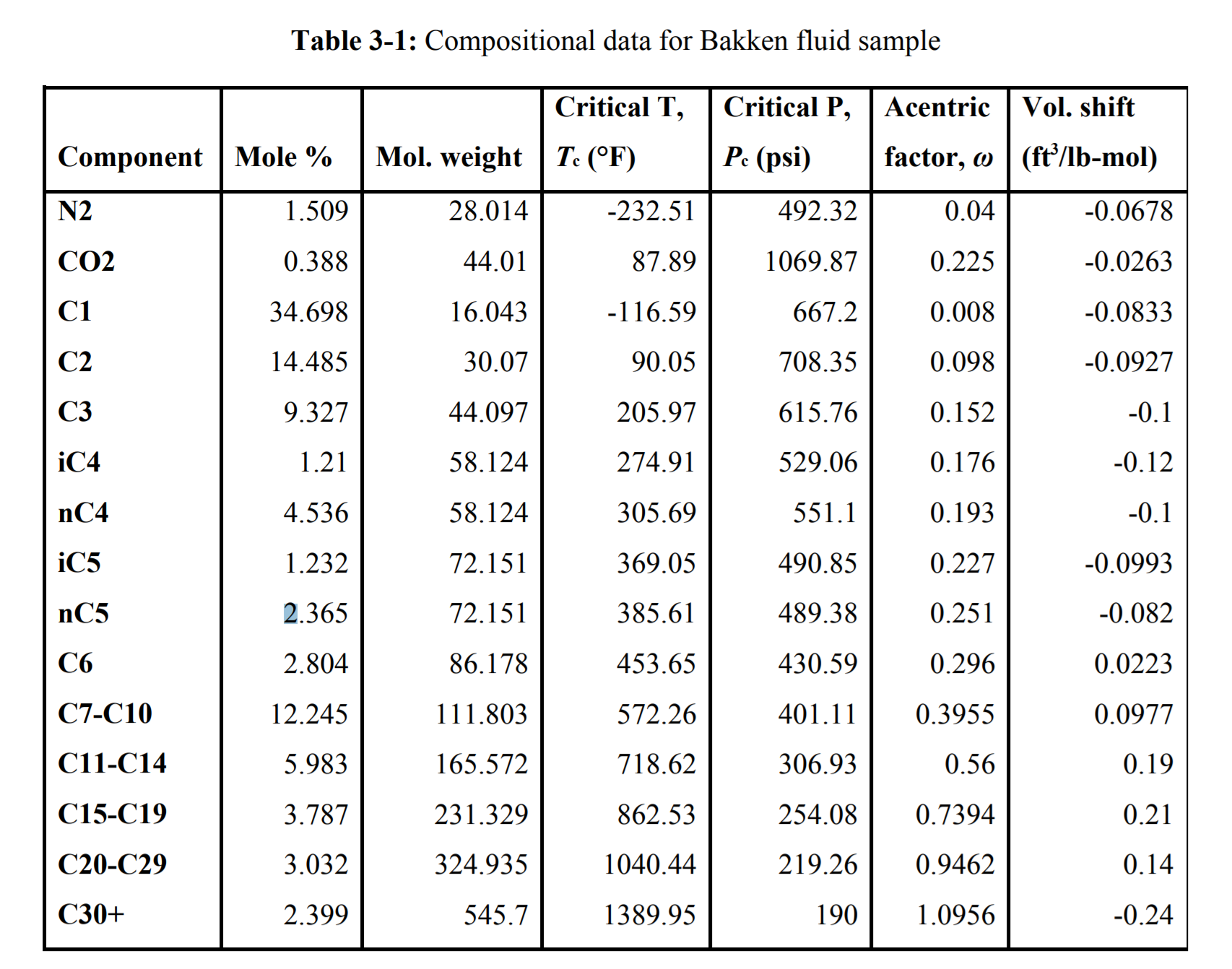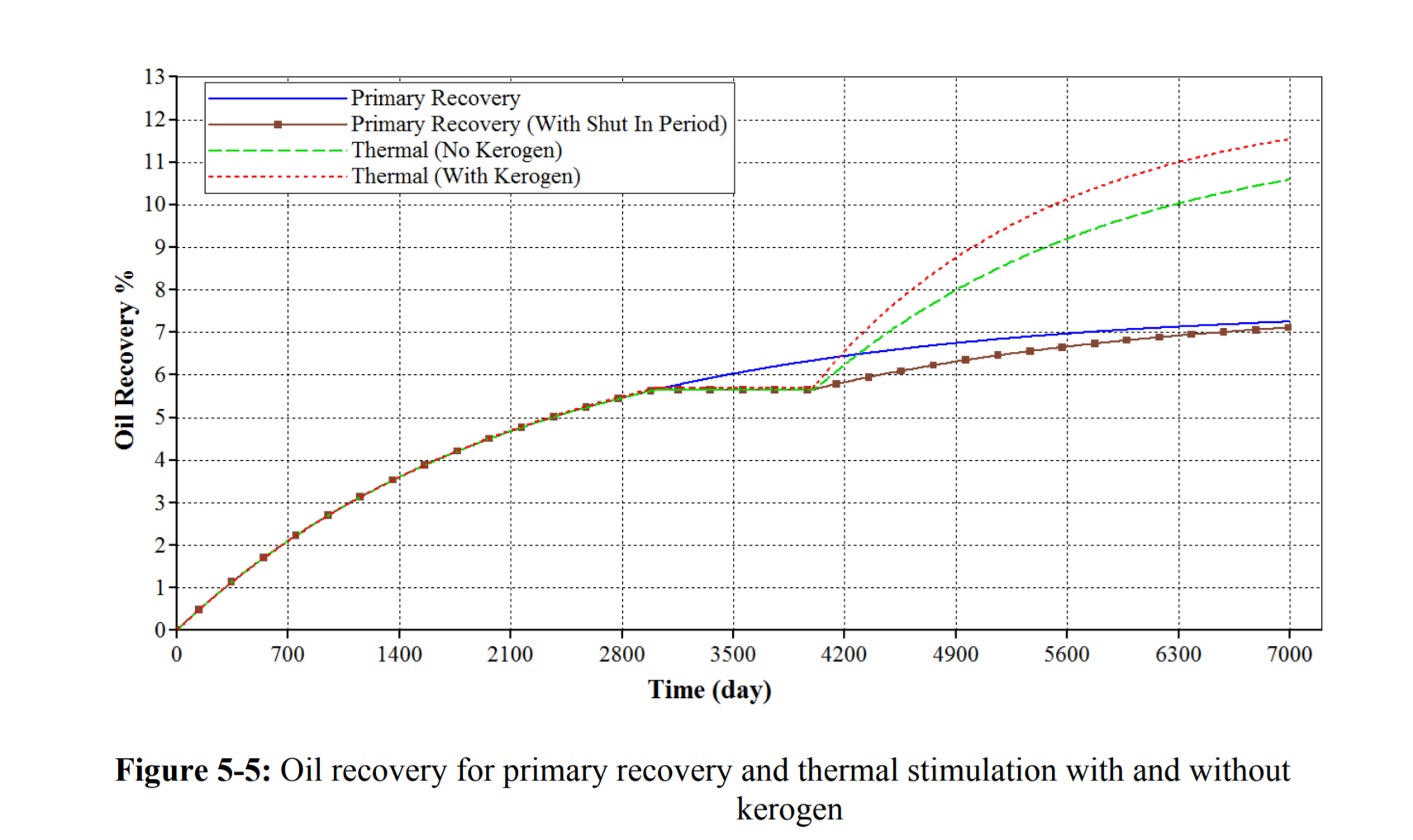Investigative Study and Sensitivity Analysis of Thermal Stimulation in Unconventional Shale Reservoirs
Shale oil production from plays such as the Bakken and Eagle Ford, driven by advances in horizontal well drilling and hydraulic fracturing technology, has helped improve US domestic oil production. However, due to the low permeability of shale oil reservoirs, primary depletion only produces 5 – 10% of the original oil in place and there is an enormous potential for improved recovery. Chemical and gas huff-and-puff methods have been piloted with varying degrees of success, but no breakthrough recovery method has been discovered.
In this study, we examined improved oil recovery from shale reservoirs by thermal stimulation, consisting of primary depletion (early in a well’s life), followed by conversion of the well to a heat injector to elevate reservoir temperature, and finally a secondary depletion. A 2D black oil, thermal, reactive transport simulator was developed to test the viability of the proposed method and then CMG STARS, a more advanced compositional/thermal simulator, was used to investigate the mechanisms involved, as well as key parameters affecting recovery during thermal stimulation.
We found that 1000 days of thermal stimulation with a 700 °F heater has the potential to increase economical oil recovery from about 7% to more than 11.5%, with potential for even greater recovery if heat injection time and temperature are optimized, as well as if heat is injected while producing oil from an adjacent well. Thermal pressurization of oil is the primary mechanism for the improved recovery. Kerogen decomposition into oil and gas results in a significant increase of hydrocarbons in place but is only a minor contribution to the additional recovery because production is limited by a lack of flow capacity. Furthermore, a two-fold increase in permeability is observed as a result of kerogen decomposition, but its contribution to recovery is also minor because the heated region is not well connected with the fractured region. The heating scheme may be improved in the future to better connect the heated region with the fractured region.
德克萨斯大学奥斯汀分校




